There are so many different ways to enjoy shrimp: in tacos, in pasta, and in salads – to name a few. And you can’t forget about the ever-present party food shrimp cocktail. It’s a classic for a reason. Everyone loves a little cocktail sauce! Learning how to cook shrimp and how to devein shrimp is essential for every at-home chef. We’re showing you the most common ways to prepare one of our favorite crustaceans: sautéed, roasted, boiled, steamed, and grilled.
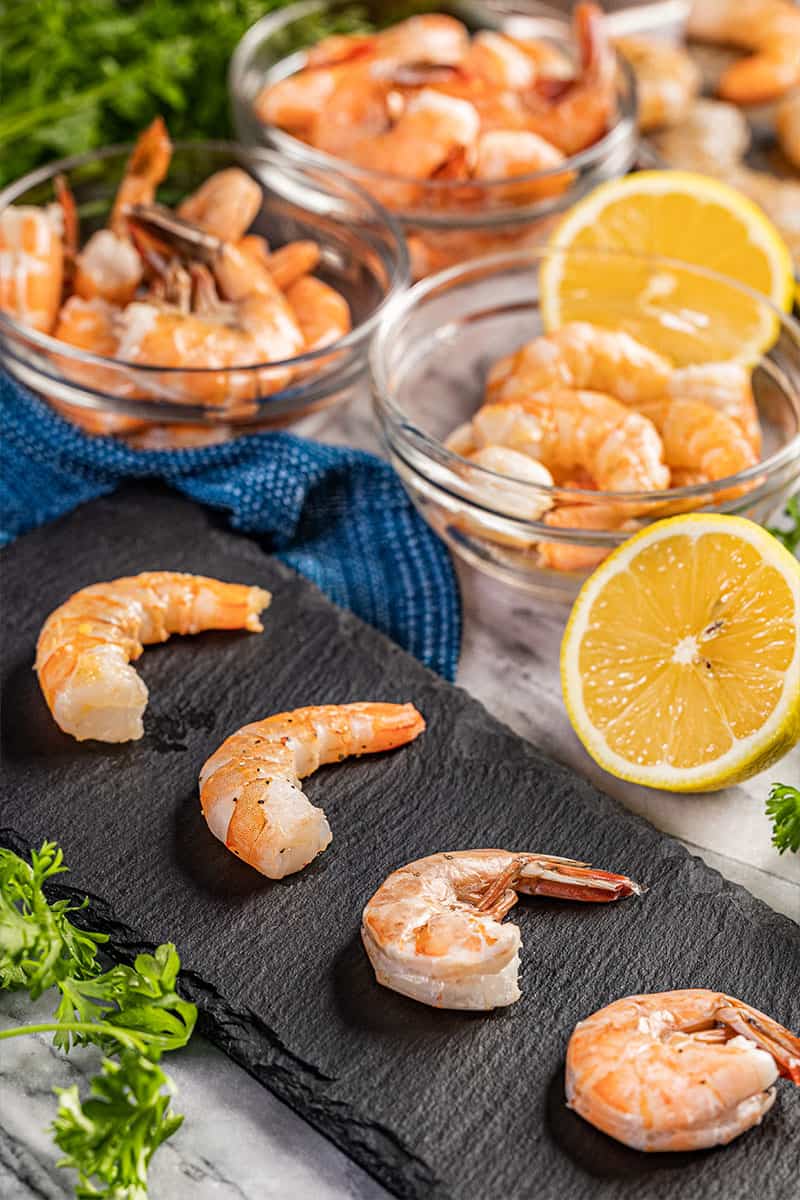
Frozen Shrimp:
If you want to use frozen shrimp, be sure to let thaw completely before cooking. You can thaw in the refrigerator overnight or in a ziplock bag submerged in a bowl full of cold water for 10-20 minutes.
How to Devein Shrimp:
If you learn how to devein shrimp yourself, you’ll not only be able to save a little money, but it’s also an important skill for any chef to learn! The veins are edible, but most people don’t like the gritty texture.
Start by rinsing your raw shrimp in a colander under cold water. If you’d like to cook your shellfish with the shell on, simply draw a knife across the back of the prawn using the tip of your knife. Remember: not all raw shrimp have veins! Check to see if yours does and pull it out using your knife.
If you’re wondering how to cook shrimp without their shell, start by deveining them first. Peel off the shell before you draw a line with your knife through the back. Shelling is very easy! Start with the legs, and gently peel off the outer shell with your fingers. Then remove the vein as indicated above.
There really aren’t any specific advantages to one cooking method over another. It all just depends on your personal preference, the recipe you’re making, your time frame, as well as the equipment required. If you’re short on time, sautéing and boiling takes just about 2 minutes. Roasting and grilling take a little bit longer, with the cooking time clocking in at just about 10 minutes. Steamed lands somewhere in the middle, and takes about 8-minutes to cook.
Ice Bath:
If you want to stop the cooking process and cool your shrimp quickly, you can always dunk your cooked shrimp in an ice bath immediately after using the boiling or steaming method. Simply fill a bowl with water and ice cubes and add your shrimp until cooled.
Serving Suggestions:
There are so many ways to dress up your shrimp with sauces, seasonings, in pastas, and even Mexican food! Whether you prefer cajun flavors, traditional shrimp scampi, or an amazing creamy pasta dish, one of these methods to prepare shrimp will work for you!
If you are wondering what to serve on the side of your main shrimp course:
- Roasted vegetables: Cauliflower, brussels sprouts, or broccoli
- Salad (you can also use your shrimp as a topping!): Caesar, pasta salad, or tomato and avocado
- Grilled meat and seafood: Lemon chicken kabobs, swordfish, or salmon
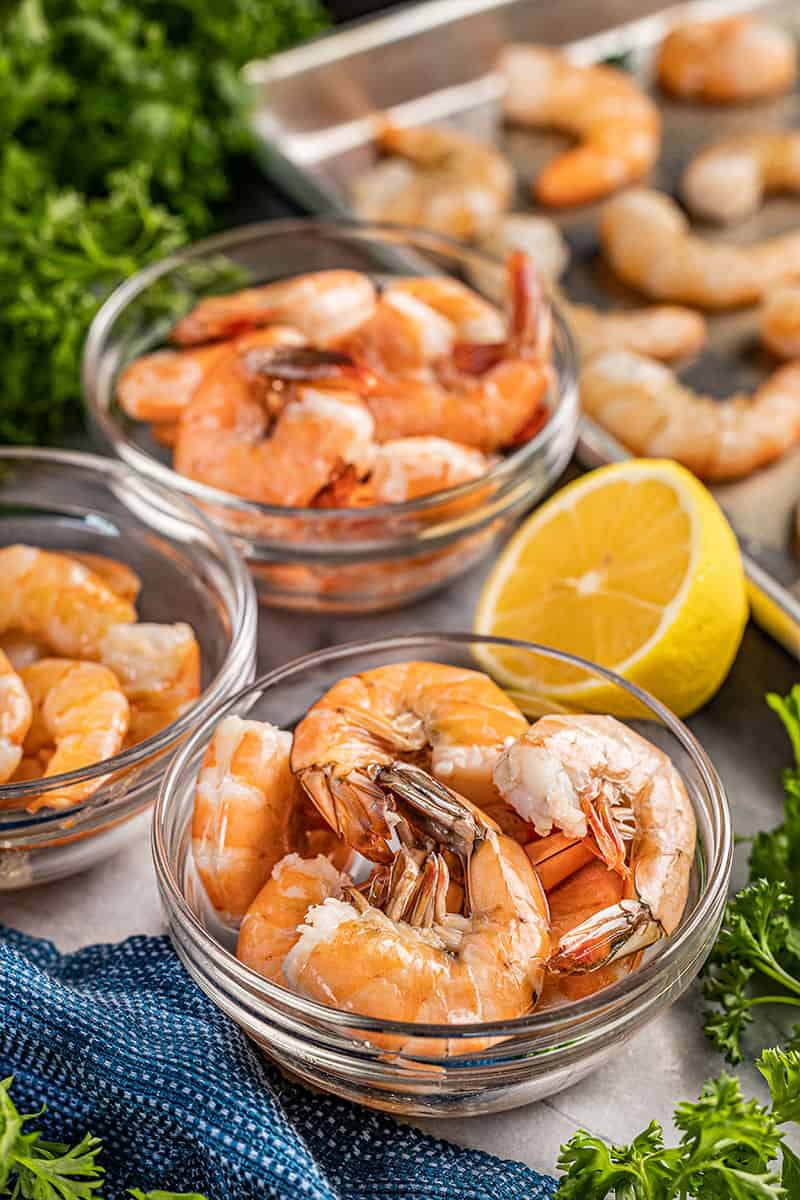
Bonus Grilling Instructions:
Preheat an outdoor grill to high heat, about 500 degrees F. Season shrimp as desired and soak wooden skewers in water, if using, 10 minutes. Either thread shrimp onto skewers to cook, or place the shrimp directly on the grill individually. Be sure that your shrimp are large enough to not fall through the grates if you are not threading them on a skewer. Cook shrimp for 2 to 3 minutes per side until they are no longer translucent.
Which Cooking Method Should I Use?
- Sautéing: ideal for pasta and sauces. Be careful not to overcook.
- Rosting: ideal for pasta and sauces. Gives a slightly sweet taste and a soft texture.
- Boiling: best for cooking large quantities, especially shrimp cocktail.
- Steaming: produces the silkiest and most tender results, and helps to lock in flavor. Use in pasta, salad, and sauces.
Storage and Reheating Instructions
You can store any leftovers in an airtight container in the fridge for up to 3 to 4 days. You can also freeze it! Place the shrimp in an airtight container or freezer-safe bag. Then, wrap the container or bag tightly with aluminum foil. It will keep in the freezer for up to 10-12 months.
Our most popular shrimp recipes…
Watch the video below where Rachel will walk you through every step of this recipe. Sometimes it helps to have a visual, and we’ve always got you covered with our cooking show. You can find the complete collection of recipes on YouTube, Facebook Watch, or our Facebook Page, or right here on our website with their corresponding recipes.
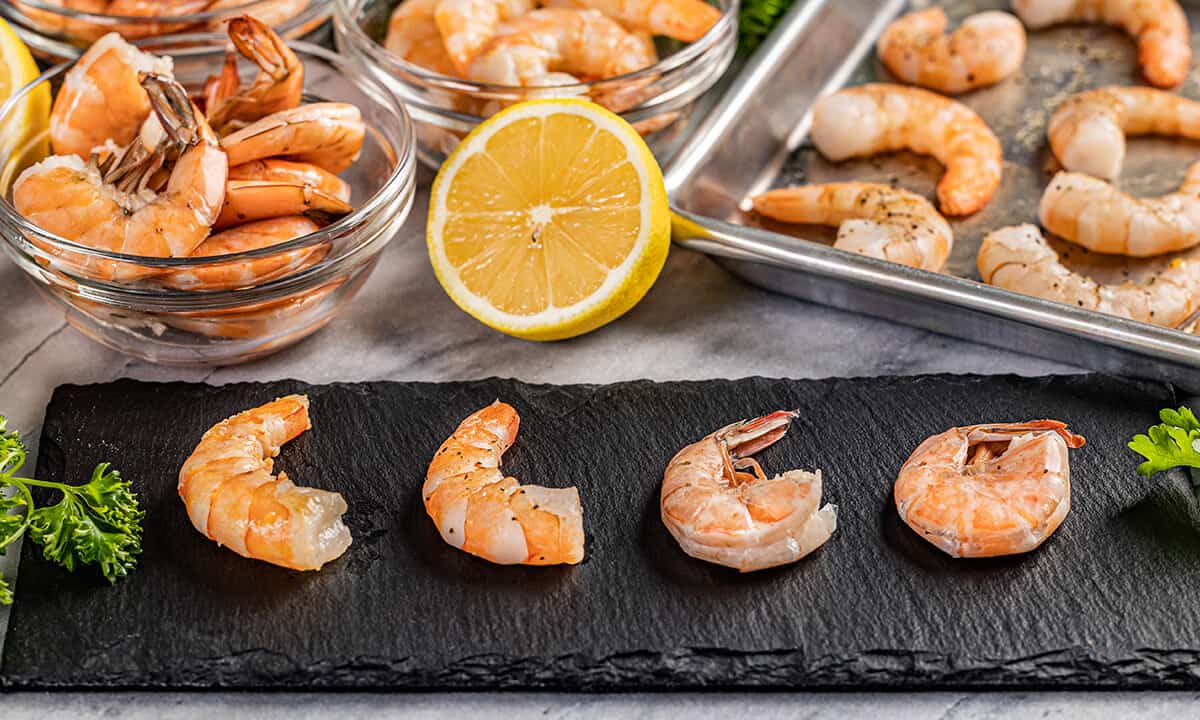
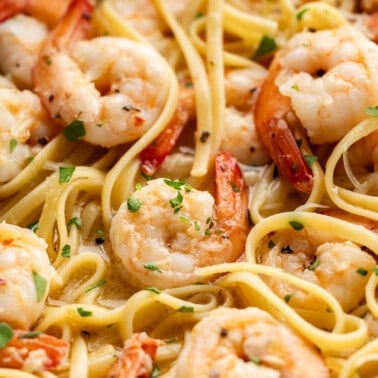
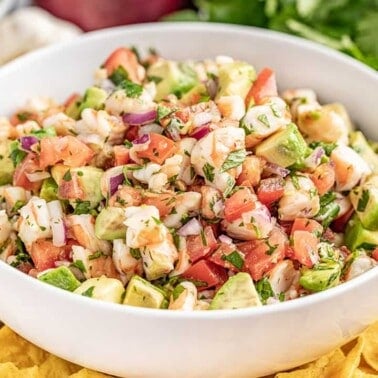
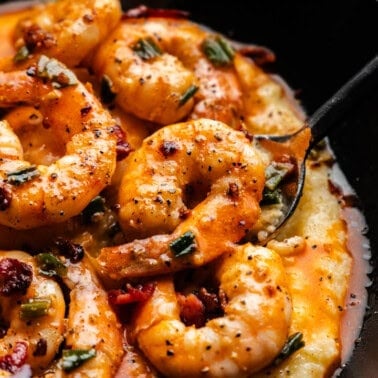
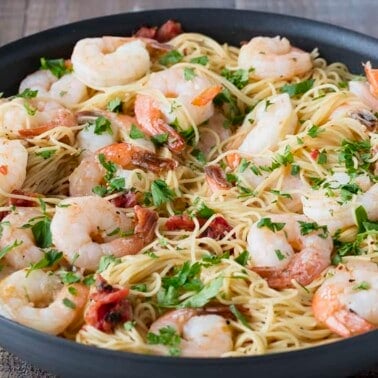
Excellent tutorial on preparing shrimp. Thank you so much!